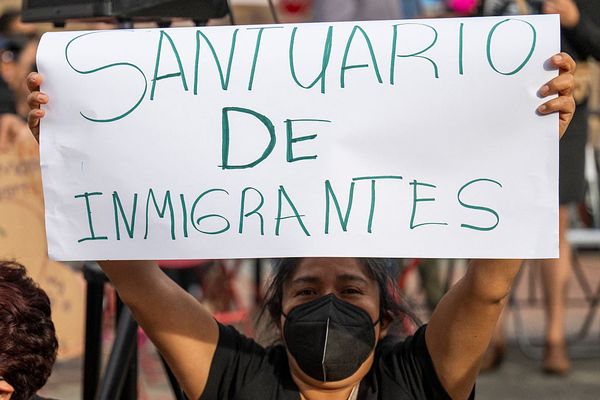
Sometimes, the markets seem rational, while other times, there appears to be a mystery behind their actions. The corn market seems to be in that mystery thriller mode. The producers are aggressively adding short positions while managed money is building long ones. To unravel this mystery, we must carefully examine all the clues and piece together the puzzle to reveal the truth behind the unknown.
Let's begin unraveling some clues….
The United States Department of Agriculture (USDA) released the December World Agriculture Supply Demand Estimates (WASDE) report, where the tone was relatively bullish for the corn market. The 2024/25 US corn outlook:
- Greater corn use for ethanol
- Larger exports
- Lower ending stocks
This news usually would have sparked a price rally after experiencing record carryover for the recent crop year. However, when the report was released at noon Eastern time on December 10, March 2025, futures were trading at $4.42 per bushel. After 11 days of trading, corn has since traded at a high of $4.51, down to $4.35. On the 11th day, March futures closed at $4.46. Bullish news like this being ignored is typically somewhat bearish for upcoming prices.
Corn Spreads
The July-December old crop new crop calendar spread has been trending higher since mid-July. When this spread trend is higher, it informs market participants that there is more demand for the old crop (July) than for the new crop (December). The following chart illustrates the demand for currently stored corn.

Source: Barchart
Later, we will discuss how managed money has built a long position in the corn market. Is it possible they have been entering the corn market using bull spreads, and if or when an uptrend develops, they will leg out into outright long positions?

Source: Barchart
The price of the July contract does not reflect the bullishness of the prior spread. Notice the current July price is not close to the June 2024 highs, yet the July-Dec corn spread is already trading back to that high.
What could be holding corn prices down?
Like any mystery, there must be some twists and turns to keep things exciting. And the corn market is not without some inside stories working against it:
- Strong US Dollar and weak Real combined with Argentina's strong exports
- China's economy continues to struggle
- South American weather is conducive to a higher yield in 2025
- The Commitment of Traders (COT) report shows a significant short position by the producers
Strong US Dollar and weak Real combined with Argentina's strong exports

Source: Barchart
While the US Dollar has been enjoying a two-year high at 108, the Brazilian Real has been plummeting to record lows. From a currency standpoint, this makes exporting Brazil's corn much less expensive than US corn.

Source: The Hightower Report from the CEMGroup Exchange
Argentina exports hang around multi-year highs, showing no signs of letting up.
China's economy continues to struggle

Source: The Hightower Report from the CMEGroup Exchange
The above graph shows that after peaking in 2020, China has reduced corn imports annually.
China's corn production accounts for 23% of the world's total corn production. Brazil is the top supplier of corn to China, and the two countries have a close relationship. Their 2023-2024 corn production estimates are approximately 289 million metric tons, up from about 277 million metric tons the previous year.
The Chinese government ended its price support for the domestic corn program. Will this force farmers to plant higher-profit-margin crops such as soybeans to compensate for the program loss, perhaps reducing China's standing as the #2 corn producer?
China's economy has been struggling, and it cannot seem to find any traction to return to the powerful nation it was on its way to becoming. Some reports suggest that China's economy will follow Japan's multi-decade spiral, as both have had significant real estate bubbles and are yet to recover.
South American weather is conducive to a higher yield in 2025
Argentina has favorable conditions for its emerging summer crops. Meanwhile, Brazil has remained warm with favorable showers that benefit crops there.
The Commitment of Traders (COT) report shows a significant short position by the producers 
Source: CMEGroup Exchange
Another reason for this mystery overhanging the corn market is the size of short positions held by producers after a harvest season. Last season, they had 446K short positions. Currently, they have 928K, confirming there is still a large amount of unpriced corn on farms. With no significant rally following the harvest season, many producers had to roll their December hedges further out while anticipating a price rally to sell into.
Seasonal pattern and a nine-year market correlation

Source: Moore Research Center, Inc. (MRCI)
The most significant seasonal pattern (blue line) for the corn market is the seasonal high that usually occurs around mid-June to July each year. MRCI research finds that this seasonal move terminates as the harvest is completed in October. The market then finds a seasonal low and slowly grinds higher into the seasonal high period. This move is not as robust as the seasonal high, and traders can expect a choppy move up from the harvest lows.
The recent seasonal high was a good example of how steady the prices fall into the seasonal harvest lows. Since the lows, the corn market has been stagnant due to all the mysteries surrounding it. The green line overlaid on the price chart is a 9-year market correlation uncovered by MRCI research. If corn traders cannot resolve these mysteries, impacting the corn market, we could see prices drift sideways for several months.
Assets to participate in the corn market
Traders can use the standard-size futures contract (ZC) or the mini-size (XN). Equity traders can trade the exchange-traded fund (ETF) named CORN.
In Closing….
The corn market's enigmatic behavior is like an unsolved puzzle, with each new clue adding layers to the mystery. Despite bullish indicators such as increased ethanol use, stronger exports, and lower ending stocks highlighted in the USDA's WASDE report, prices have remained surprisingly restrained. Compounding this intrigue are the unusual dynamics in producer short positions and managed money's bullish posture, which seems to defy traditional market logic. The disconnect between July futures prices and the bullish old-crop new-crop spread trend adds another twist, suggesting hidden forces may be at play, keeping the market from following its typical seasonal trajectory.
What lies ahead for corn prices remains uncertain, as several external factors weigh heavily on the market's direction. A strong US dollar, Argentina's robust exports, and China's economic struggles contribute to a global supply-demand imbalance. Meanwhile, South America's favorable weather forecasts bolster their crop outlook, creating additional headwinds for US corn. Producers hold substantial unpriced corn and hedge positions, so the market may remain in suspense until a clear catalyst emerges. The corn market's narrative is a tale of tension, waiting for the next revelation to unlock the whole story.







